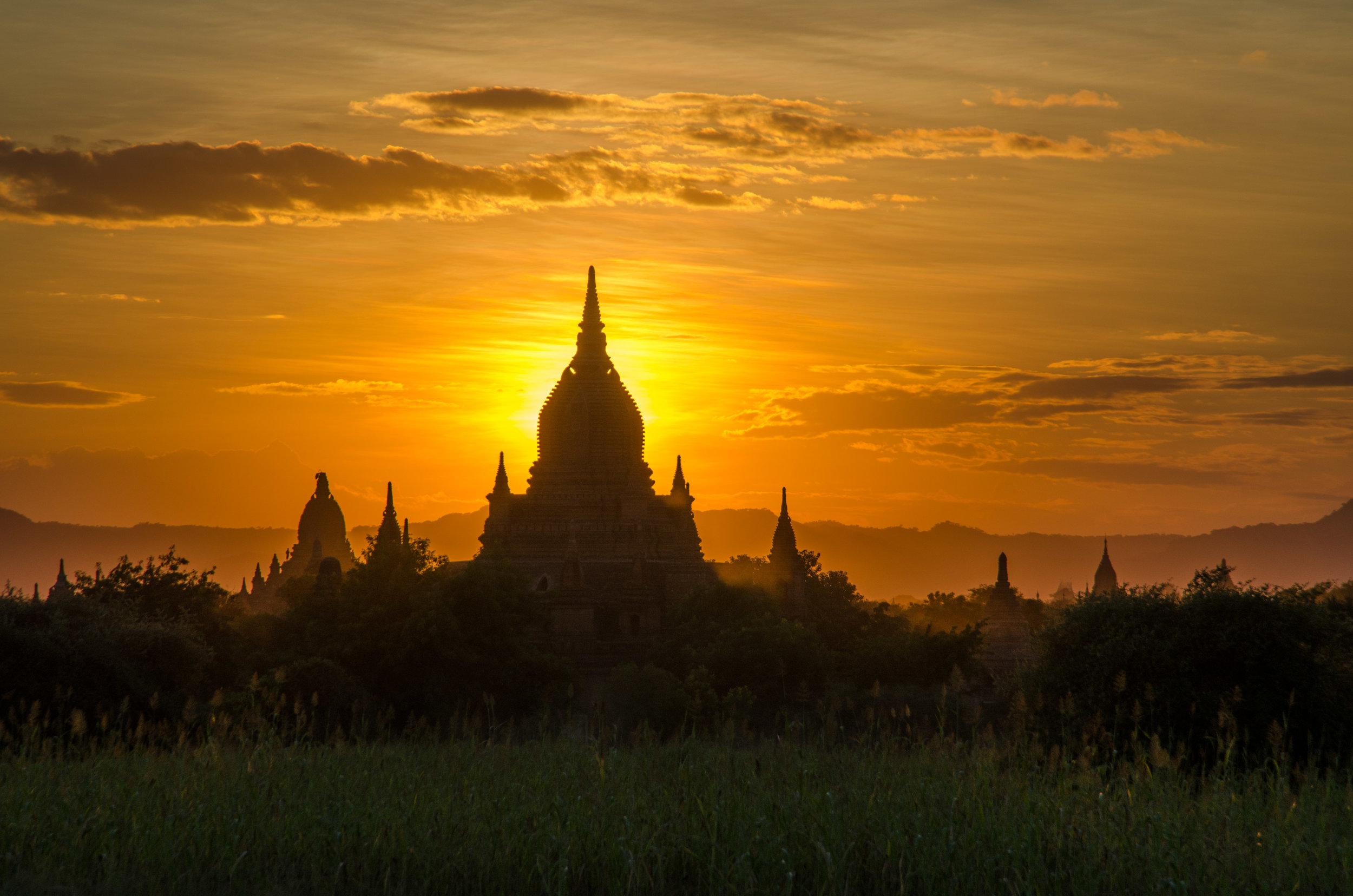As our flight from Mandalay to Bagan was for 08:20 and we were an hour’s drive from the airport it meant that we started our day at around 05:00. We departed our hotel at 06:30 and had breakfast from supplied snack boxes during the bus trip. The Mandalay city traffic at this time of the morning was fairly light and so we made good time and were soon checked though security and on our way to Bagan.
The short, thirty minute flight to Bagan rather than driving was presumably due to the poor standard of the road, a problem that is common in Myanmar.
On arrival we were met by our new guide Aung Shie who promptly arranged our luggage to be loaded onto the bus and we headed on our way.
Our progress was abruptly halted by a traffic jam caused by a procession celebrating a religious festival to do with the Shwezigon (Golden) Pagoda in Bagan.
Shwezigon (Golden) Pagoda Festival parade, Bagan
The procession was several kilometres long and had hundreds of children and adults all dressed in traditional costumes carrying flags, parasols and numerous ceremonial extras. In amongst the parade of people were horses and elephants adorned in colourful ribbons and ceremonial paraphernalia. In addition there were decorated wooden carts loaded up with generators and loud speakers issuing a cacophony of raucous singing and music to the crowds who aligned the roadside.
We stayed and observed this unbounded merriment for half an hour or so and enjoyed the colourful spectacle even though it was unbelievably noisy!
Bagan has over two thousand surviving ancient monuments entailing monasteries, temples, shrines and stupas. These are the remnants of an imperial capital that reached its peak between the 11th and 13th centuries. The Bagan Archeological Zone encompassing Old Bagan, covers an area of about 50 square kilometres scattered across an arid plain in a bend in the Ayeyarwady River. It was formerly the living place of the Bagan people but with restoration work being undertaken by UNESCO is was cleared of people and made into a heritage site of major significance to the world. Residents of Bagan now live a few kilometres further south from the archeological zone in the part now referred to as New Bagan.
Our first visit to this treasure-trove of Buddhist antiquity was to the Ananda Temple commissioned by Kyanzittha in 1105.
The temple is surmounted by a classically proportioned corncob gilded tower with the outer walls and arched gateways being aligned with the compass cardinal points.
Inside there are four huge wooden and gilded Buddhas standing in huge recesses interconnected by corridors that are adorned by stone sculptures, small golden Buddhas and paintings. The four Buddhas have a female body shape and possess somewhat comical faces with mouths that are disproportionately small. The north and south Buddhas are the original 11th century ones whereas the other two are replacements of earlier ones destroyed by fire.
The exterior walls of the temple are most impressive with stone chinthes sculptures of grinning lions incorporated into the building. Numerous green-glazed terracotta plaques called Jataka tiles, showing scenes from the Buddha’s life adorn the lower levels of the temple.
After a lunch break we checked into our hotel and then went on a pony cart ride through the Archeological Zone.
Our travels were on mostly dusty tracks in amongst the numerous temples and stupas that cover the landscape.
At sunset we climbed to a small embankment and watched the sun sinking behind an horizon of magnificent stupas and temples; it was spectacular.
Sunset, Bagan
We then returned to our hotel and after some drinks and snacks we all retired for the night after a long and highly interesting day.
Throughout our travels so far in Mandalay we’ve experienced warm to hot dry days with temperatures seldom above the low 30s but here in Bagan today the temperature reached the mid-thirties but this is still classified as the cool winter season. Summer temperatures in Bagan range into the mid-forties!



